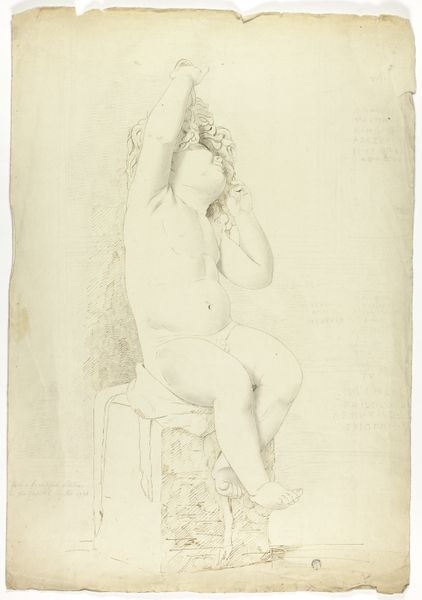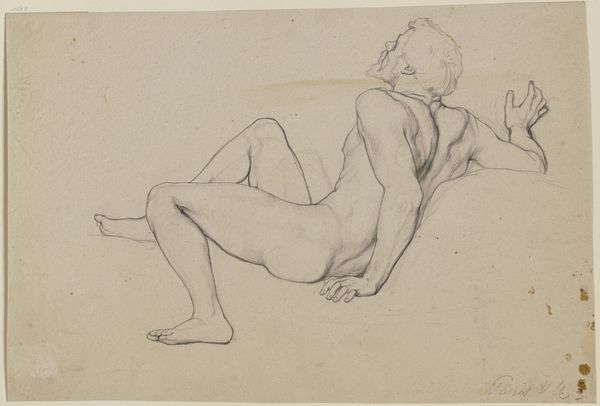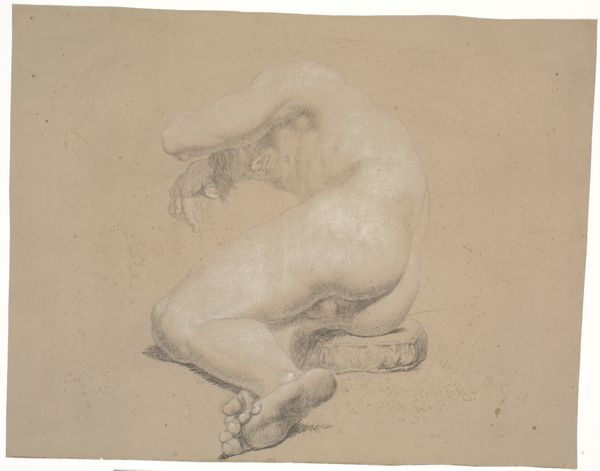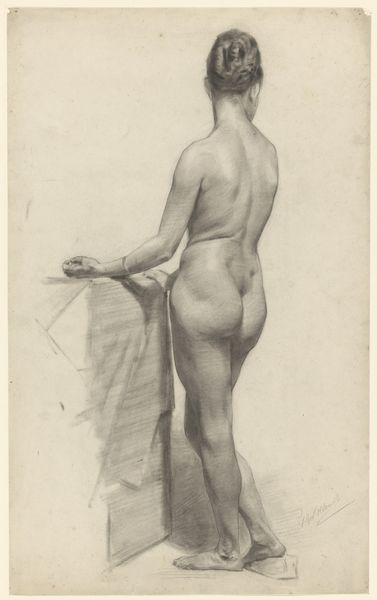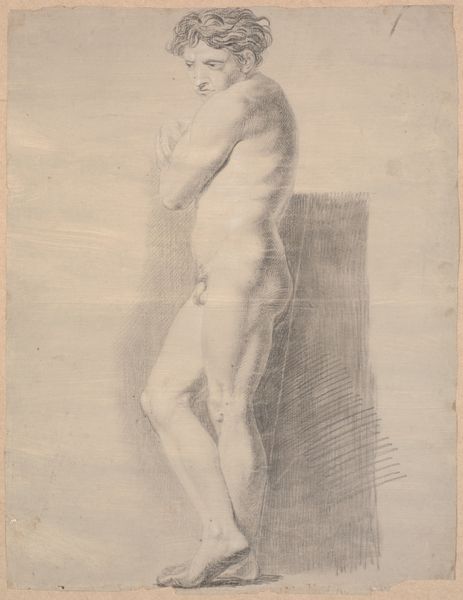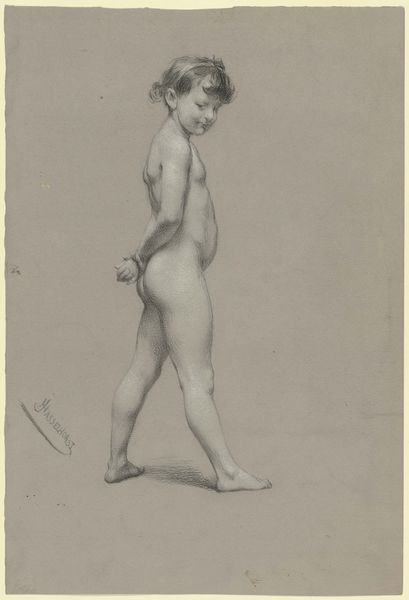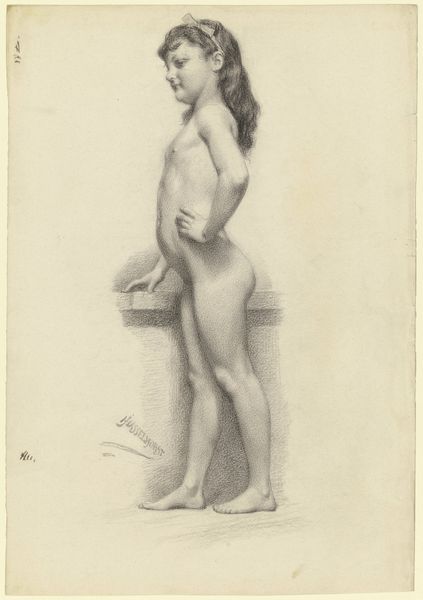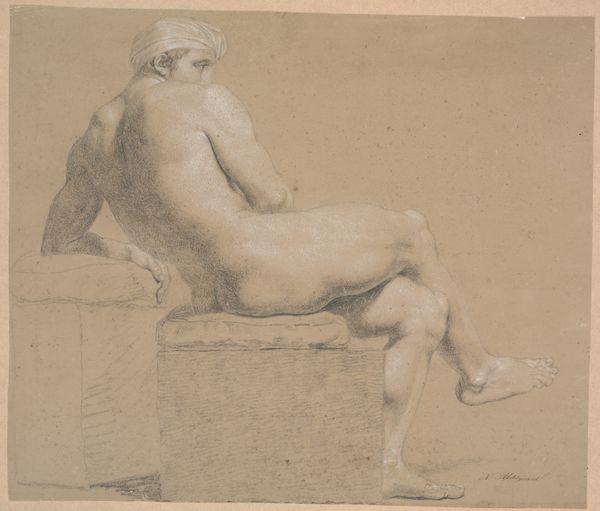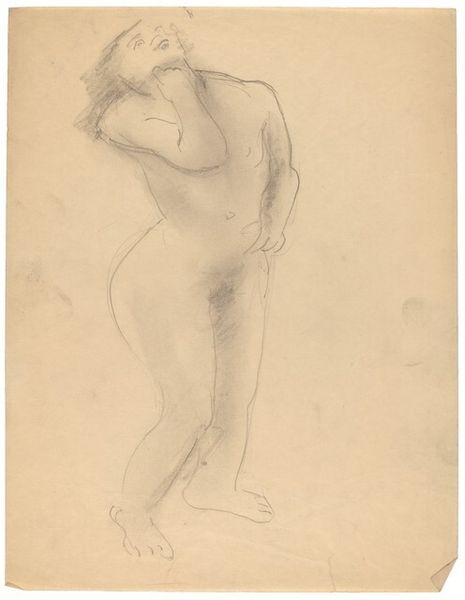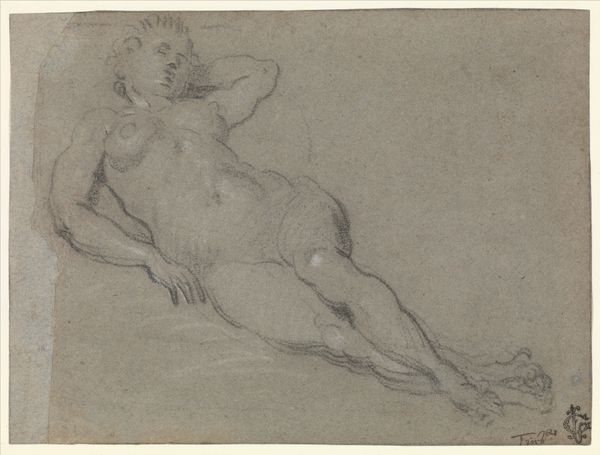
Copyright: Public Domain
Art Historian: Editor: So, this is "Weiblicher Akt, sitzend, von der Seite gesehen," or "Female Nude, Sitting, Seen from the Side," by Carl Morgenstern, dated 1836. It's a pencil drawing. I’m struck by the artist’s choice to present the figure with her back turned, it evokes a sense of anonymity and perhaps vulnerability. What do you see in this piece? Art Historian: What immediately stands out to me is the artist's choice of subject matter within the broader context of 19th-century artistic conventions. During this time, nude studies were often exercises, but also opportunities to engage with ideas about beauty, femininity, and even societal expectations. Given the date, Romanticism's influence is apparent. How does the work challenge or reinforce prevailing notions of female representation at the time, in your opinion? Editor: That’s a good point, it doesn’t really feel overtly romantic, and perhaps a bit critical of academic figure studies. There's something very direct and unidealized about the depiction of the woman’s body, her posture and positioning. I’m curious how much agency the model may have had in how she was depicted. Art Historian: Precisely! The historical context of the artist-model relationship is key. The gaze is central here, or rather, the absence of a direct gaze towards the viewer. What implications might this have? Consider power dynamics, gender roles, and the very act of looking and being looked at. Can this drawing be seen as an early, subtle commentary on objectification? Editor: Wow, I didn’t initially see it that way, but framing it within the history of art and social power dynamics is incredibly insightful! The averted gaze, the lack of idealization… It all starts to read as a statement. Thanks for broadening my perspective. Art Historian: My pleasure! Seeing art through the lens of history and social context truly unlocks new understandings.
Comments
No comments
Be the first to comment and join the conversation on the ultimate creative platform.
